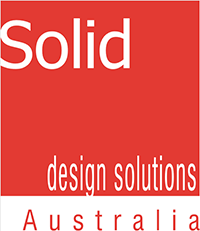
Project Management Services
Solid Design Solutions Australia’s (Solid Design) core business offering is providing project and program management services for the entire process of developing a new product or creating and commissioning a piece of custom capital equipment or machinery. From discovery, planning and budgeting through contracts development and subsystem design validation to full system testing and acceptance we can manage! All projects are managed with PMI’s PMBOK® best practices to control cost and meet schedule while verifying the quality and performance requirements are being met for your new product or equipment.
Do you have an approved project and want to move forward? Let’s Get Started!
Depending on the client’s needs and desires, some of the project sub plans may be combined or minimised. A cost/benefit discussion with every client will determine the magnitude of the Project Management effort needed for a particular project. Some projects will require cross functional engineering teams with both internal and subcontracted 3rd party resources located in different countries and involve engagement of stakeholders located in several countries. Other projects will require one or two internal engineering resources with all stakeholders consisting of employees of the client. We’ll work with you to determine what the right amount of project management is for your project.
Things we’ll need to do at the beginning. Some of these tasks you may have already completed, otherwise we can work together to complete them:
- Write a Project Charter. This document defines who the project Sponsor is and who are the major Stakeholders for the project. It describes the main requirements for the product as well as the business case, overall schedule targets, budget targets and other constraints of the project. The Project Charter should also describe what organisational resources are allocated to the project and what level of control the Project Manager will have over the use of these resources.
- Write the Project Scope Statement. This will provide the overall guidance to the Project Manager of what is in the scope of the project, the business and project objectives, constraints, assumptions, definition of success and a high level summary of the product performance requirement(s).
- Conduct a SWAT Analysis. This activity will should be conducted with the project sponsor and the key stakeholders and will often require multiple meetings with multiple groups. For most product design projects spending the time to do this right is well worth the investment. The SWOT Analysis consists of four (4) components [1]:
✓ Strengths, characteristics of the business or project that give it an advantage over others.
✓ Weaknesses, characteristics that place the business or project at a disadvantage relative to others.
✓ Opportunities, elements in the environment that the business or project could exploit to its advantage.
✓ Threats, elements in the environment that could cause trouble for the business or project.
With these project documents created, Solid Design’s Project Manager will get things rolling. The following major tasks are conducted during the Discovery and Concept Phases.
Create the Project Management Plan
First things first, we’ll create the Scope Management Plan, Requirements Management Plan and the Risk Management Plan. Stakeholder engagement efforts will be implemented and the Stakeholder Management Plan will be developed. Then we’ll develop the schedule details and the Schedule Management Plan.
Over the past 20 years, Solid Design has developed a design engineering process to guide new product design and development projects. This is a phase-gate process focusing on identifying requirements and fully exploring human/user centred design needs early in the process of designing a product.
For high uncertainty product and equipment development that integrates a new technology, or a technology which has never been used in the envisioned application, Solid Design utilises a Technology Readiness Level (TRL) process. This process reduces the risks and costs associated with integration of new technology subsystems within a new product framework. The SWAT analysis will identify when your product development project should use a TRL process.
With the project process structure selected, our Project Manager, working with the Project Engineers and other lead engineering resources, will build the details of the Work Breakdown Structure (WBS) using MS Project software. With the initial baseline WBS created, the projected resource requirements for the project can now be quantified and project team members, contracted SMEs and capital requirements can be finalised for the first phase the project.
Build the Team
Once the project management plan has projected the amounts and types of resources required the make up of the Project Team can been assembled. Solid Design will build the project team through a mix of client’s resources, Solid Design staff members, contractors and SME consultants. All critical resource selections will be reviewed with the project sponsor for finalisation.
Build the Product Requirements Document (PRD)
Working with project Stakeholders, users and project team members the Project Manager will gather full requirements, ensuring use cases are documented for the project and Human Centred Design principles are followed. Competitor products will be reviewed and assessed against the documented requirement for the new product. The first iteration of the Product Requirements Document will be released to Stakeholders for review and the Requirement Traceability Matrix will be created.
Concept Development Brainstorming
Our Project Manager will conduct brainstorming ideation sessions to identify conceptual solutions to meet the requirements for the new product. Subsystems of the conceptual solutions will be identified. Concepts will be refined and assessed. A decision matrix will be created to identify the preferred concept based on a range of criteria.
Solid Design’s PMI certified project managers consult closely with project sponsor(s), project stakeholders, SMEs, engineers and designers to ensure that your project stays on track every step of the way.
Our extensive expertise adds value through a strategic allocation and coordination of resources, which increase efficiency and thoroughness to minimize time to market.
